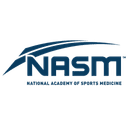This course is part of NASM Personal Fitness Trainer Professional Certificate.
This comprehensive course provides fitness professionals with essential scientific knowledge in anatomy, physiology, and kinesiology. Students learn about body systems, movement mechanics, and their practical applications in fitness training. The curriculum covers skeletal, muscular, and nervous systems, bioenergetics, and biomechanical principles. This foundational knowledge enables trainers to design safe, effective exercise programs and understand the scientific basis of human movement. The course emphasizes practical application of concepts in real-world fitness settings.
225 already enrolled
Instructors:
English
What you'll learn
Understand the structure and function of major body systems
Explain the roles of nervous, skeletal, and muscular systems in movement
Apply biomechanics and kinesiology principles to optimize movement
Design safe and effective exercise programs based on scientific principles
Analyze movement patterns using anatomical and kinesiological concepts
Implement evidence-based training methods for diverse client needs
Skills you'll gain
This course includes:
124 Minutes PreRecorded video
24 assignments
Access on Mobile, Tablet, Desktop
FullTime access
Shareable certificate
Closed caption
Get a Completion Certificate
Share your certificate with prospective employers and your professional network on LinkedIn.
Created by
Provided by

Top companies offer this course to their employees
Top companies provide this course to enhance their employees' skills, ensuring they excel in handling complex projects and drive organizational success.





There are 5 modules in this course
This comprehensive course covers the fundamental sciences essential for fitness professionals. Students learn about anatomical structures and their functions, physiological systems and processes, and biomechanical principles of human movement. The curriculum progresses from basic anatomy and physiology to advanced concepts in exercise physiology and kinesiology. Through detailed study of the nervous, skeletal, and muscular systems, students gain the knowledge needed to understand human movement and design effective exercise programs. The course emphasizes practical application of scientific principles in fitness training settings.
Introduction to Anatomy and Physiology
Module 1 · 4 Hours to complete
Anatomy and Physiology Part II
Module 2 · 3 Hours to complete
Exercise Physiology
Module 3 · 5 Hours to complete
Introduction to Kinesiology
Module 4 · 6 Hours to complete
Final Assessment
Module 5 · 3 Hours to complete
Fee Structure
Individual course purchase is not available - to enroll in this course with a certificate, you need to purchase the complete Professional Certificate Course. For enrollment and detailed fee structure, visit the following: NASM Personal Fitness Trainer Professional Certificate
Instructor
Content Development Manager at the National Academy of Sports Medicine
Casey DeJong is a Content Development and Production Manager at the National Academy of Sports Medicine (NASM), where he plays a crucial role in shaping educational content for aspiring fitness professionals. He is also an instructor for the NASM Personal Fitness Trainer Professional Certificate program on Coursera, where he teaches foundational principles of exercise science and personalized program development. With a background in instructional design, Casey has previously held positions such as Senior Instructional Designer at NASM and adjunct professor at Western International University. He holds multiple degrees, including a BS in Business Marketing and an MBA from the University of Phoenix, along with certifications in product management and generative AI skills. His expertise lies in creating engaging learning experiences that empower students to succeed in the fitness industry.
Testimonials
Testimonials and success stories are a testament to the quality of this program and its impact on your career and learning journey. Be the first to help others make an informed decision by sharing your review of the course.
Frequently asked questions
Below are some of the most commonly asked questions about this course. We aim to provide clear and concise answers to help you better understand the course content, structure, and any other relevant information. If you have any additional questions or if your question is not listed here, please don't hesitate to reach out to our support team for further assistance.



